Can a smartphone still be cool? They were, once upon a time, in those days when they were more luxury than ubiquity. But what happens when everyone has one — and, more to the point, we all pretty much have the same one? Phones aren’t fashion. They’re not clothes or shoes or even cars. Chances are probably roughly equal that you’ve got the same one as the world’s richest billionaire or the person who bags your groceries.
I won’t go so far as to say choice among smartphones is an illusion, but it’s also probably not as great as you think. The last several years have seen a consolidation of the market among a fleetingly small handful of companies, while once mighty brands like LG and HTC have fallen off. Add in geographical and carrier limitations, and it becomes clear how small a pool we’re ultimately swimming in here.
Nothing is a company founded on, among other things, the notion that smartphones can still be cool. That they can be exciting and interesting in an area where they’re more or less all similar touchscreen electronic slabs.
There’s never been a good or easy time to launch a new smartphone company. But in a number of ways, founder Carl Pei may have chosen the worst — or at very least, the most difficult. Along with the aforementioned consolidation comes an overall stagnation and decline in smartphone sales. After a decade of flying high, things came sputtering down to Earth. It’s a regression that pre-dates but was ultimately accelerated by the pandemic.
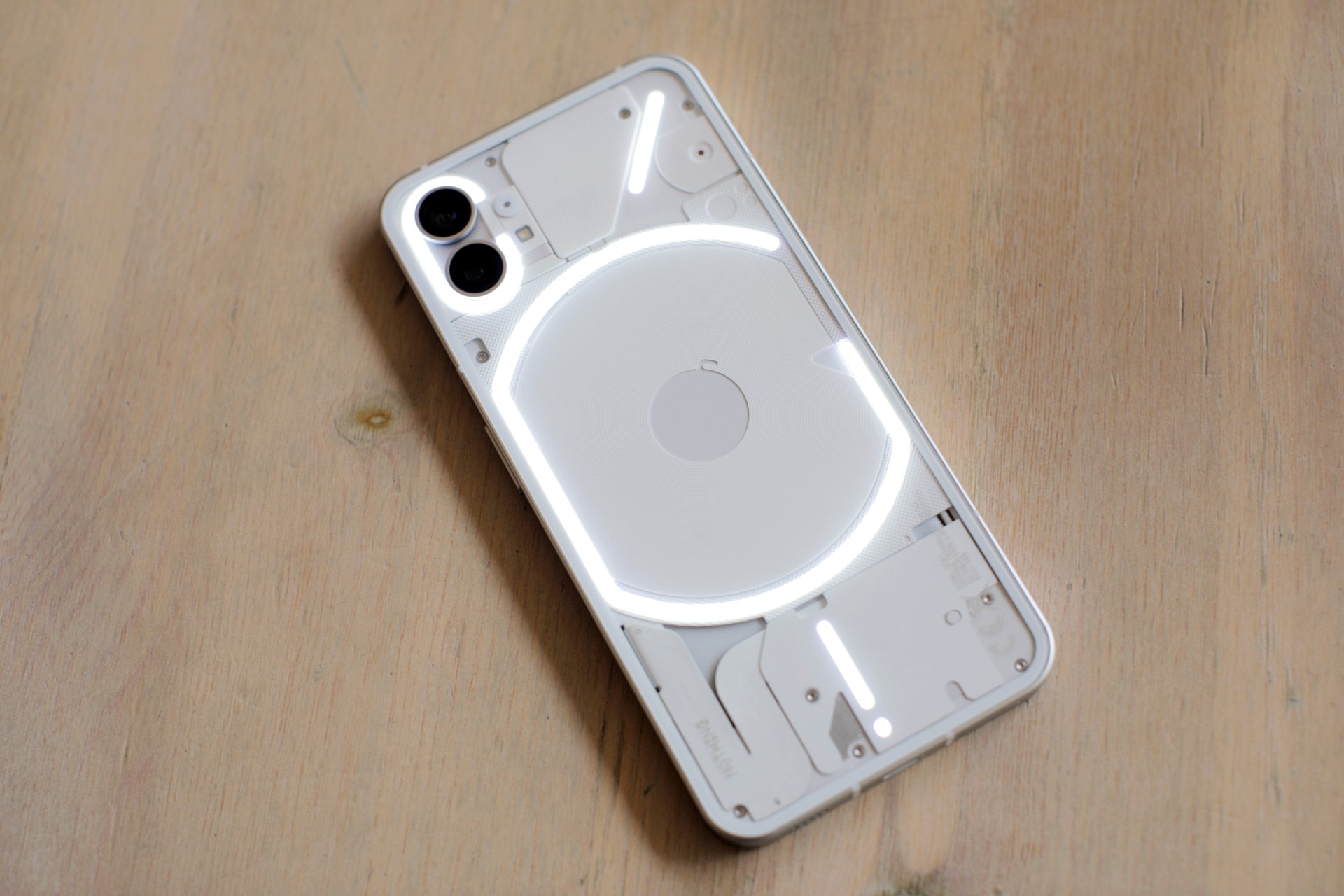
Smartphone manufacturers painted themselves into a corner in a bid to beat the competition. In the process, devices improved to a point that people felt less compelled to upgrade as often. Differentiation grew more difficult and continued attempts to add features to outdo others drove flagship prices into the quadruple digits. It’s a paradox of sorts — smartphones may have gotten too popular for their own good.
Those factors presaged a massive supply chain crunch. Chips and other components have been increasingly difficult to procure at scale for companies not named Apple or Samsung, while external financial factors, including inflation, have driven up the price of consumer electronics. Anyone with a passing interest in the category will probably agree that the category could use some new life, but how one might go about supplying it is a different question altogether.
“Nothing has been a difficult company to launch,” Pei recently told me. “This industry, in general, has one of the highest barriers of entry. We have huge companies, and it’s consolidating. There are a handful of companies that are active, and huge companies tend to be pretty bureaucratic, slow moving and very analytical. No wonder why all the products are kind of similar these days. In a regular industry or product category, you also have fresh blood that keeps coming in from below. In our industry, there’s no fresh blood because the barrier to entry is so high.”
Other barriers exist, as well. That, after all, is precisely the reason Nothing isn’t bringing its first phone to the States. While American consumers have begun to recognize the appeal of purchasing unlocked devices, carriers still have a stranglehold on the market. “You have to work with a big carrier,” Pei added, “they have a lot of negotiation power over you.”
Nothing Ear (1) headphones were a fine way to test broader consumer interest. The earbud market, while still saturated, still has room for growth. And, besides, $99 for a pair of headphones from a brand-new manufacturer is a much easier ask than a smartphone — even a $400 one.
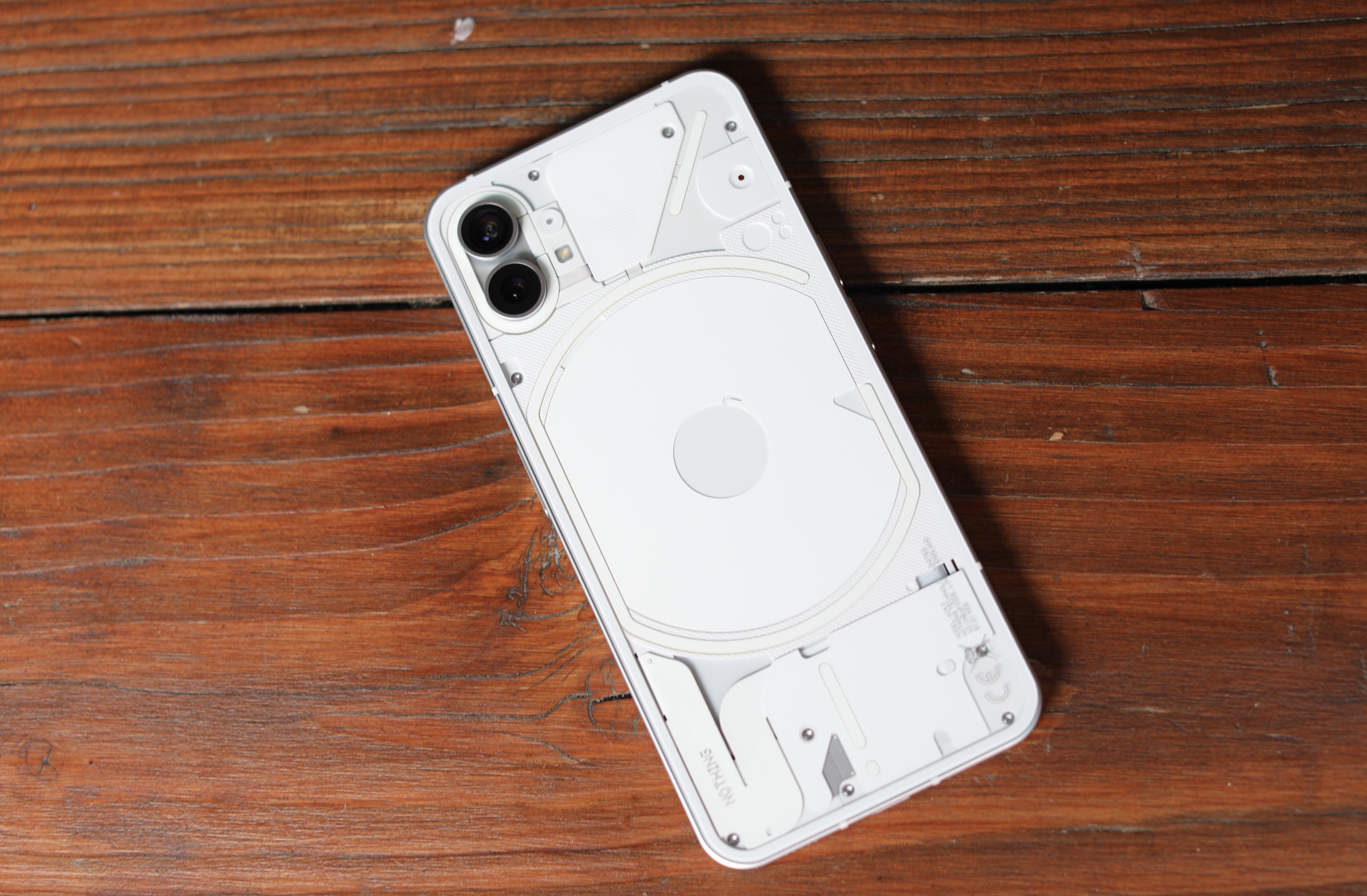
In the meantime, the company has worked diligently to build out a brand. Pei’s biggest strength has been his ability to build community. It was a key piece of OnePlus’ early successes, and he’s doing his best to recapture that magic with Nothing. For the phone, that’s meant things like invite-only purchasing (something that happens to dovetail nicely with those supply chain issues), crowd equity investing and, yes, NFTs. Scarcity isn’t a concept one tends to think about when discussing a mass-produced product like a phone, but maybe there are lessons to be learned from crypto and hype beasts cultures.
Aesthetic consistency is another shortcut for building a brand. When we broke the news that the company was working on a phone back in March, we noted:
Details around the forthcoming device are thin, though the source notes that the product will share a similar design language and “elements of transparency” seen in Nothing’s first product.
It’s safe to say that the report bore out. The clear back, coupled with the “Glyph” LED lighting arrangement is, by far, the phone’s most striking visual element, sharing a language with Nothing’s transparent earbuds. Stripped of that aspect, it, well, looks an awful lot like an iPhone. “I’ve gotten that feedback,” Pei told me when I brought this up. “It’s the most efficient use of space.”
Is the current iPhone some platonic ideal of smartphone design? I guess it is until it isn’t, and someone else figures out something better. Perhaps this speaks to another kind of limitation: physical design and use of space. Sure, Nothing could have gone out of its way to produce something entirely different, but 1) good luck finding a manufacturer that will work with you and 2) you’re suddenly catapulting yourself in the world of function over form. There’s certainly some wiggle room to play with, but a phone needs to be functional first, and then you can start worrying about the other stuff.
Ultimately, when you choose utility, you’ve got to find other ways to stand out as a true alternative in the samey world of handsets. That’s the liminal space the Nothing Phone occupies. It’s a kind of thought experiment into how one can go about differentiating oneself in a product category that’s already so mature and well defined.

One thing that’s undeniable, however, is that the form factor is solid. The combination of glass and metal, coupled with the heft of the device, affords the Phone (1) a premium feel. It’s not heavy — certainly not for a phone this size — so much as substantial. Build-wise, there was never point I felt like I was carrying around anything but a flagship.
The company determined that bleeding-edge specs weren’t the hill to die on, either. This much is understandable. Going head-to-head against Samsung and Apple in an all-out spec war is a game you’re going to lose. This is most glaringly obvious in the case of the chipset. The inclusion of the Qualcomm Snapdragon 778G+ chip puts the device firmly in the mid-range category. Like pretty much every other aspect of building your first phone in 2022, there are trade-offs.
I’d assumed the decision was largely budgetary. I suspect that still played a factor in the decision, but ultimately Nothing’s choice not to go all-in on the latest flagship chip was a bit wonkier than that. Pei said the decision to go with a TSMC fab — rather than Samsung — is what pushed it over the edge. “It was a difficult choice, because we knew there would be people saying, ‘hey what are you doing? It’s not the latest.’ But I think it’s the most responsible choice in the seven series.”
Performance-wise, the phone can hang. It performs well, particularly will those devices in its price range. Sure, there are trade-offs that come with not adopting this year’s latest flagship chip, but nothing that should have a profound impact on your daily use. The chips are coupled with a solid starting 8GB of RAM and 128GB of memory. There are three tiers, in all, ranging from £399 ($473) to £499 ($592) for 12GB/256GB — again, positioning the product in the mid-tier.
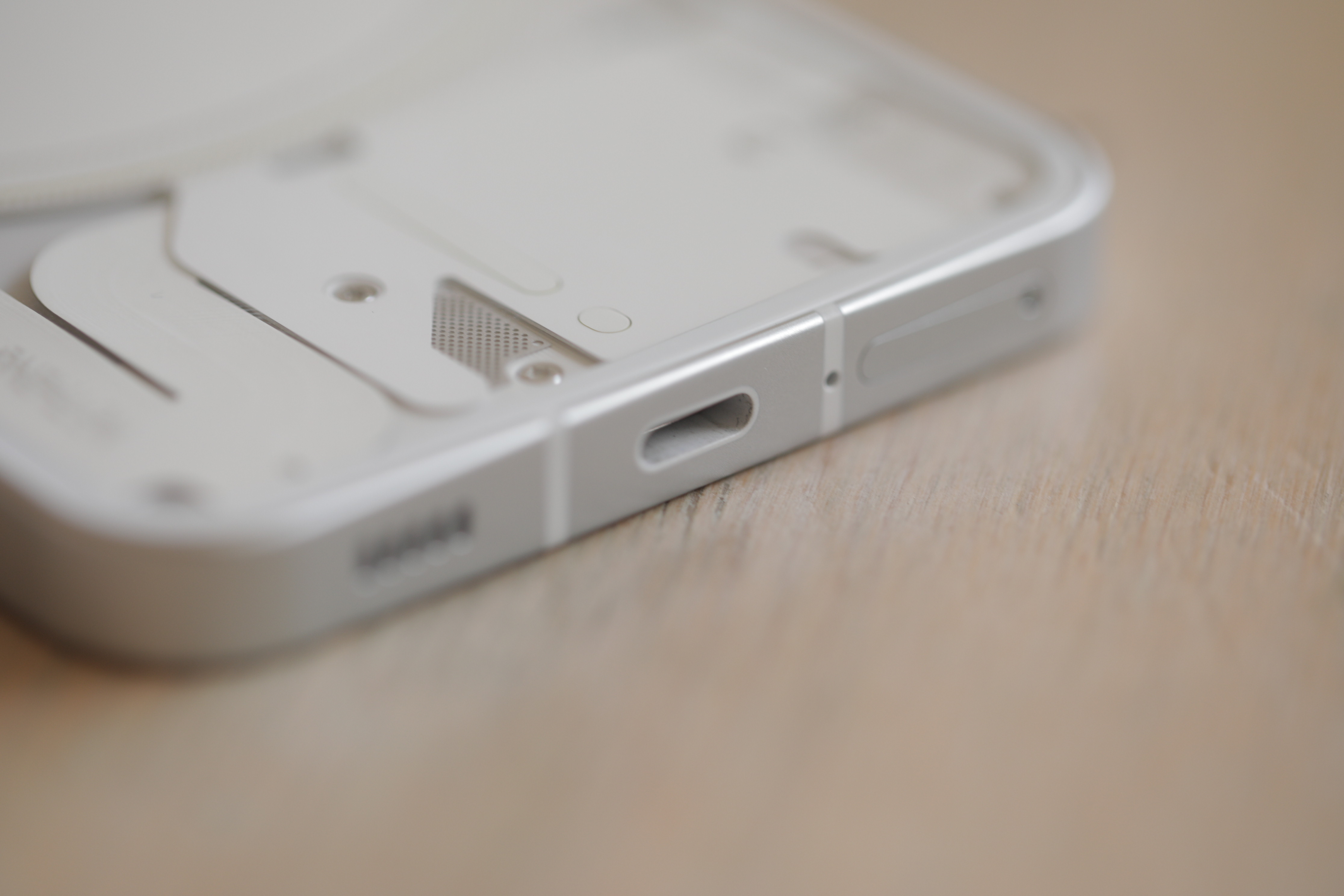
It’s a good value — especially for a first-time phone. The resources required to launch a device like this are tremendous. Pei certainly alluded to the fact that a large portion of the company’s raise thus far is tied up in the Phone (1), making this phone’s success nearly make or break for the young company. For that reason, I wouldn’t have been entirely surprised if Nothing passed some of the financial burden along to the consumer.
Much like the spec conversation, pricing your product similarly to Apple and Samsung’s is a fool’s errand. Firstly, $1,000+ phone prices are one element that has throttled phone sales. Finding a better price point makes the product more competitive, and opens up additional markets like India, which tend to be more interested in mid-tier pricing (a big market for Nothing, as it happens). It’s likely no coincidence that pricing was also a key part of OnePlus’s strategy, as well.
The back is, meanwhile, the most unique design element I’ve seen on a handset recently, aside from foldable screens. Is it a gimmick? Yes, 100%. It’s a decent one, however, with some real functionality. It’s also the reason the device ships with a warning for people with epilepsy and light sensitivity. That’s not something you see with most handsets — and partially an indication of just how bright this thing gets at full power. The “Glyph” is made from 900 LEDs, covered by a diffusing layer that makes it look like one connected light source. The design is certainly unique. “They told me it’s the kanji character for ‘love,’” Pei told me about his design team. “But I call bullshit on that. I can’t see it.” It can be programmed for a variety of different notifications, but it takes some time to remember which is which.
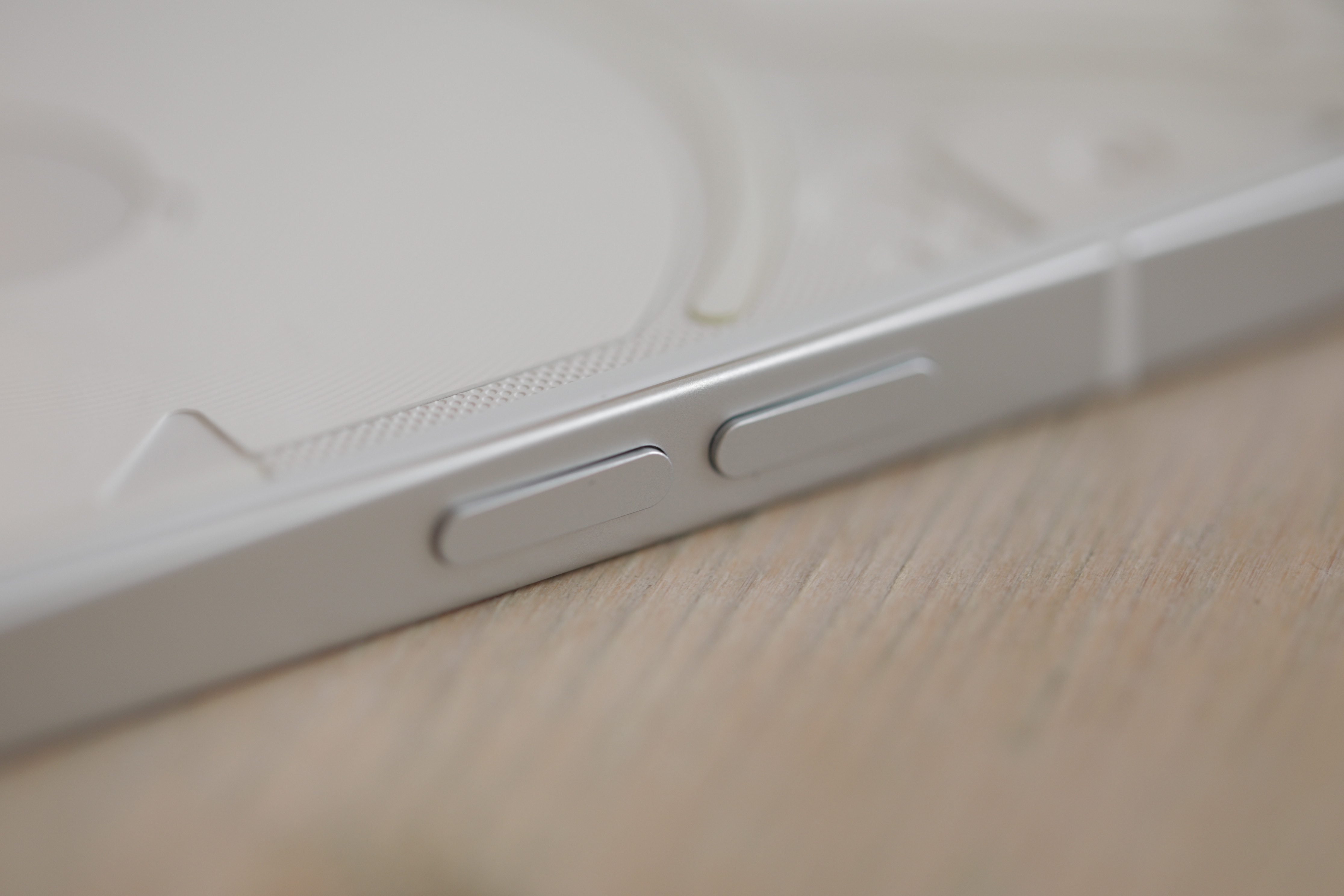
In the center is a 5W wireless charging coil. Choose “Power Share” from the drop-down menu, pop a pair of earbuds in the center and the ring will light up to let you know it’s doing its thing. The battery life overall isn’t head-turning, but the 4,500mAh battery will get you through a day and a half of normal use with no problem.
The OLED screen measures in at 6.55 inches. It’s a great-looking display at 2400 x 1080, with a smooth 120Hz refresh rate. The screen is on the larger side, which, in turn, makes for a larger phone. I’m on the taller side of the human spectrum and had no problem porting the handset around, but that could certainly be a limited factor for many users.
The 16-megapixel front-facing camera sits behind a hole punch in the display. It has a built-in night mode and is capable of shooting video in 1080. A pair of rear-facing 50-megapixel cameras sit atop each other on the rear, their respective housings creating a small camera bump. The overall quality of images is quite sharp, and the system has some built-in tricks, including the inclusion of a macro mode and clever use of the two cameras to double as a depth detector. Overall, it’s a solid implementation and an impressive showing for a first-time phone-maker.
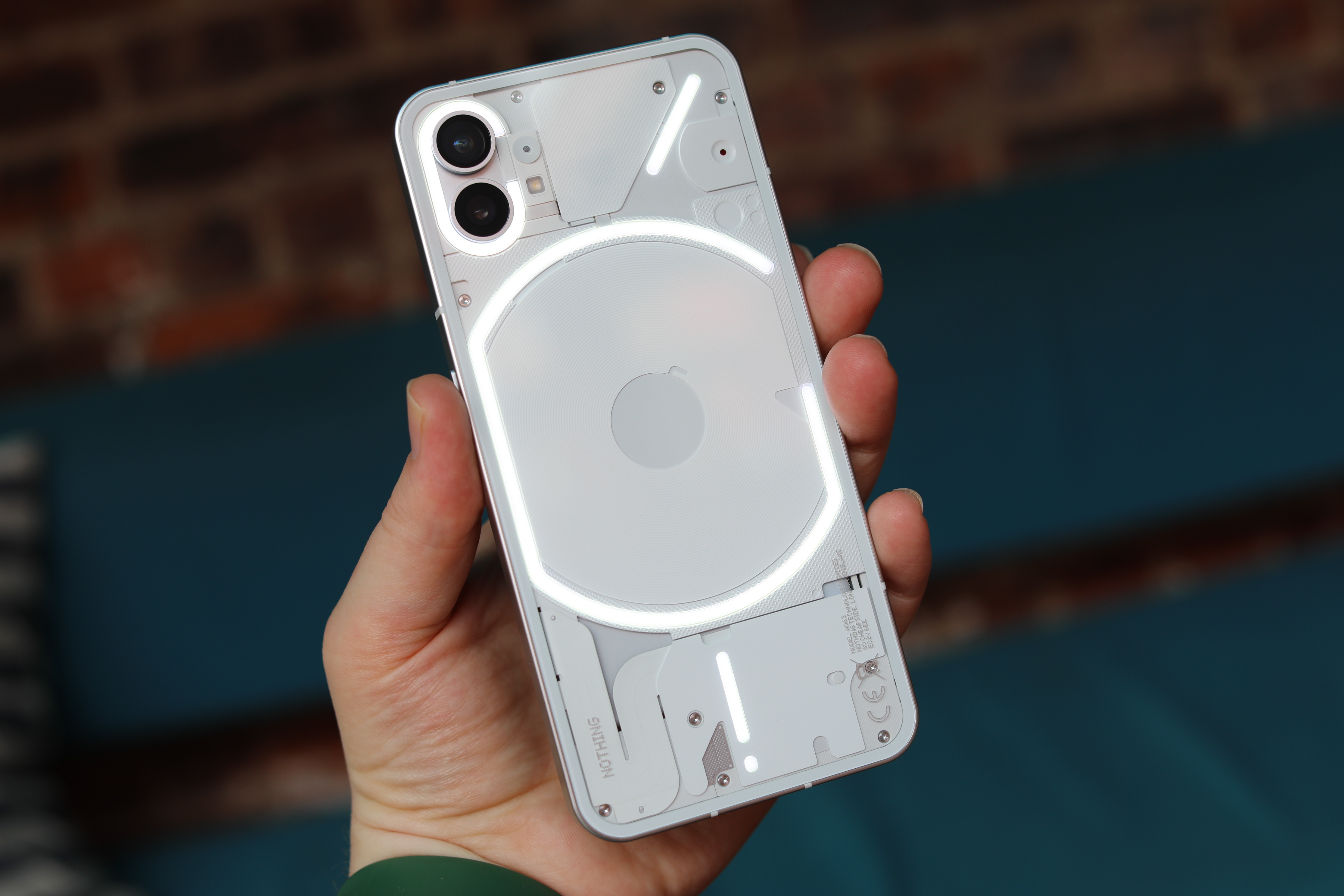
The device itself isn’t rated for dust or waterproofing. Pei told me that the decision to skip the official process came down to time. Each side of the product is covered in Gorilla Glass 5, which should protect against drops, and rubber elements inside the phone will — at the very least — help it deal with rain and splashes. I wouldn’t, however, go swimming with the phone just yet.
Nothing’s Phone (1) is a refreshing change of pace in a smartphone market that has lost much of its sense of fun. It’s not a revolutionary device — but marketing material aside, that was never really the point. It has to be a solid and reliable Android handset at its foundation, and on that front it’s a success. It’s novel enough to turn heads and service as the starting point for an interesting company.
But is it cool? That’s ultimately in the eye of the beholder. It’s definitely fun, functional and nice to look at. Too bad it’s not available in the U.S.
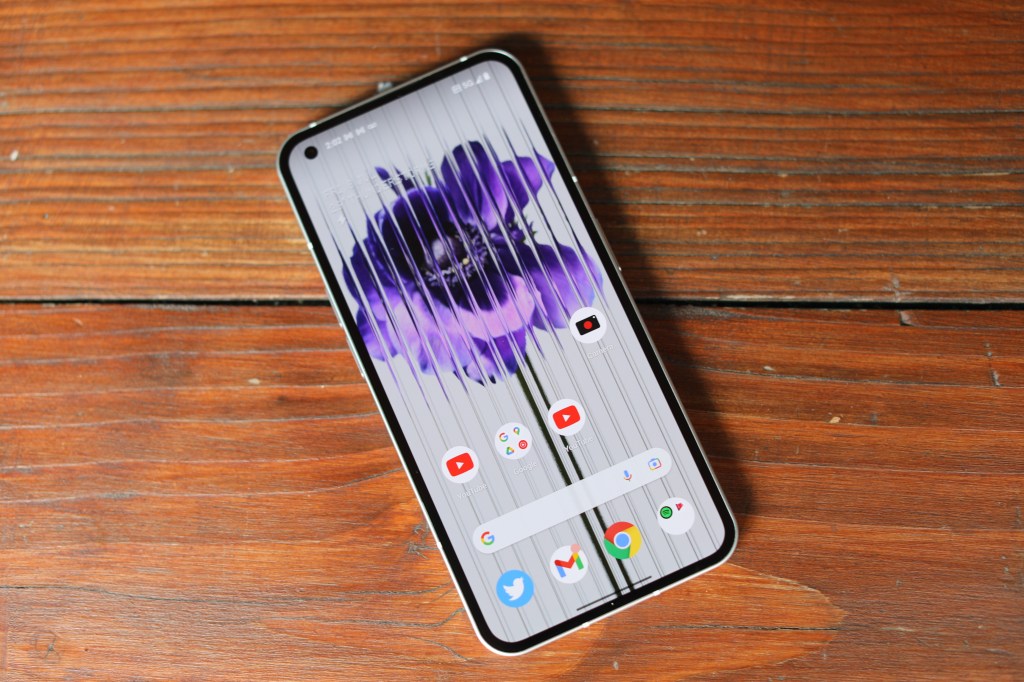






























Comment